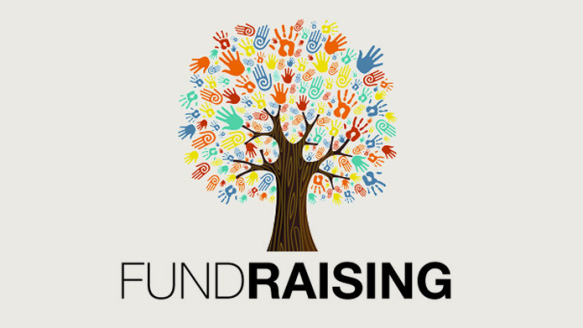The Role of Neighborhood Interaction in Nonprofit Fundraising: Structure Lasting Relationships for Lasting Support
Area engagement is significantly recognized as a crucial element of effective nonprofit fundraising. The techniques and techniques utilized to involve areas differ extensively, elevating crucial inquiries about performance and effect.
Recognizing Community Engagement
Community involvement is an important element of successful nonprofit fundraising initiatives. It describes the approaches and activities that organizations employ to connect with their regional areas, fostering partnerships that are equally useful. Comprehending area involvement involves identifying its complex nature, that includes outreach, participation, and collaboration. Nonprofits have to recognize vital stakeholders-- such as area participants, neighborhood organizations, and various other organizations-- to create effective engagement strategies.
Effective area interaction is asserted on active listening and responsiveness to the demands and rate of interests of the community. This procedure includes getting responses, comprehending community characteristics, and ensuring that the organization's mission lines up with local priorities. Involving the neighborhood can take different forms, consisting of public meetings, volunteer chances, and collaboration initiatives, each made to urge participation and investment in the organization's goals.
Moreover, community interaction ought to be approached as a recurring discussion rather than a single initiative. By promoting a comprehensive environment where community voices are heard and valued, nonprofits can construct a solid foundation for future fundraising undertakings. Ultimately, a deep understanding of community engagement encourages organizations to create authentic connections that improve their general effectiveness and sustainability.
Benefits of Solid Relationships
Solid relationships created through neighborhood engagement return various advantages for not-for-profit fundraising initiatives. Primarily, these partnerships foster trust and reliability, necessary components in encouraging benefactors to contribute. When prospective advocates see a not-for-profit actively included in their community, they are more probable to think in its mission and effect.

Additionally, these connections assist in effective communication. Nonprofits can take advantage of their links to share stories of impact, updates, and requires, guaranteeing that advocates remain educated and involved. This open line of communication not only enhances bonds but likewise motivates word-of-mouth promo, increasing the nonprofit's reach.
Lastly, strong neighborhood ties can attract new companions and enrollers. Services and people are much more inclined to straighten with companies that show meaningful community involvement, providing added resources and support that can considerably improve fundraising capacities. Therefore, growing robust partnerships through community involvement is integral to a not-for-profit's long-lasting fundraising success.
Approaches for Effective Interaction
Just how can nonprofits efficiently engage their areas to enhance fundraising efforts? Routine updates, involving material, and calls-to-action can galvanize area interest and engagement.
Second, hosting area events, such as workshops, volunteer opportunities, or fundraising drives, facilitates in person communication, allowing nonprofits to showcase their impact and initiatives. These events not just increase funds but additionally grow partnerships and permit area members to involve straight with the reason.
Third, carrying out customized communication approaches can boost engagement. click here now Tailoring messages to particular benefactor sectors based on passions and previous payments cultivates a sense of belonging and financial investment in the company's goal.
Lastly, creating collaborations with local companies and community leaders can magnify outreach initiatives. Collective efforts can enhance visibility and reliability, showing a cumulative commitment to the area's well-being. By integrating these methods, nonprofits can build enduring partnerships that enhance fundraising initiatives and drive lasting assistance.
Gauging Interaction Success
While engaging the neighborhood is essential for effective not-for-profit fundraising, gauging the performance of these interaction efforts is equally crucial. Establishing clear metrics permits organizations to analyze exactly view it how well they are linking with their audience and achieving their fundraising goals. Key efficiency indications (KPIs) such as donor retention prices, volunteer engagement levels, and involvement on social media platforms provide concrete information for analysis.

Consistently analyzing these metrics makes it possible for companies to pivot their strategies when needed, making certain that area interaction stays lined up with their overall mission. Additionally, sharing these outcomes with stakeholders cultivates openness and constructs depend on, motivating additional community participation. Ultimately, a robust dimension framework not only informs future fundraising campaigns but likewise enhances the relationship between the nonprofit and its advocates, laying the foundation for sustainable success.
Case Researches in Neighborhood Effect
Countless case research studies show the profound effect that community involvement can carry nonprofit fundraising success. One noteworthy instance is the "Food for Thought" effort, where a local food bank partnered with colleges and companies to host neighborhood dinners. These events not only increased funds however likewise fostered a sense of belonging amongst individuals, dramatically enhancing contributor retention rates.
Another compelling situation is the "Green Spaces Project," which involved neighborhood residents in the revitalization of city parks. This initiative not just gathered economic assistance from local companies yet likewise grew a volunteer base that added to continuous upkeep and programs. The sense of ownership and satisfaction among neighborhood members equated right into continual contributions.
In the realm of arts, the "Art for All" campaign successfully involved local artists and patrons to develop collective art installments, bring about enhanced presence and contributions for a regional arts nonprofit.
These examples highlight that when nonprofits prioritize area participation, they can produce long-term connections that improve fundraising initiatives, making sure lasting support and cultivating a vivid area society. Such situations show that area interaction is not just an approach but a crucial column of nonprofit success.
Final Thought
In conclusion, area engagement is essential to the success of not-for-profit fundraising efforts. Inevitably, a durable foundation of area support not only intensifies fundraising potential but also cultivates a society of collaboration, essential for attaining long-term organizational goals and sustaining significant influence. fundraising consultant.
Nonprofits must determine key check my site stakeholders-- such as neighborhood participants, regional companies, and various other organizations-- to produce efficient involvement techniques.

In final thought, community involvement is important to the success of not-for-profit fundraising initiatives.